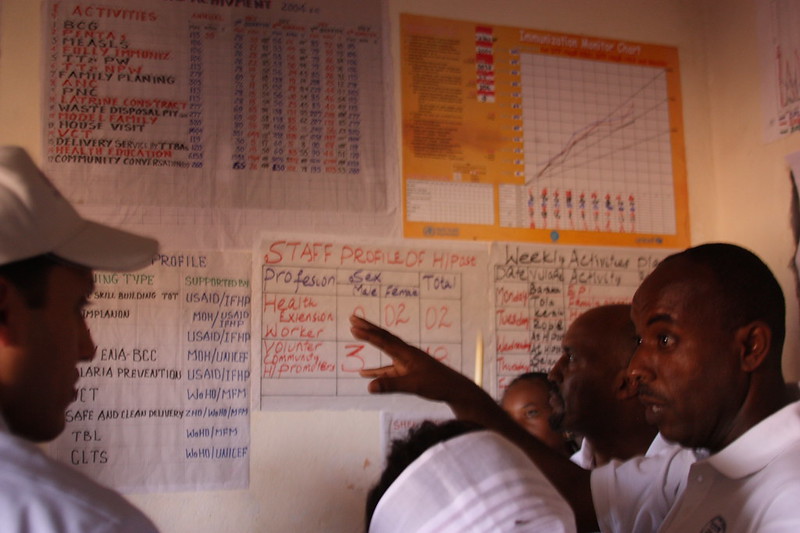COVID-19 has placed an unimaginable strain on health systems across the world, especially in regions that have been hit hardest. As of 5th June, there have been over 6.5 million confirmed cases, with over 380,000 deaths globally. With surges in the numbers of people requiring hospitalization and intensive care, many health systems have been temporarily overwhelmed. Some countries have utilised their armed forces to assist the civilian response to the COVID-19 crisis. Recognising the important relationship between the military and medical institutions, in this blog we outline how militaries around the world–but specifically in eight European countries–have been feeding into the COVID-19 response.
Connecting the military and health
In times of crises, states often rely on their military to enforce law and order, but there is also a long history that connects the military and medical institutions as co-dependent, critical disciplines that evolved together from ancient times to today. Putting aside the medical management of trauma from battle, in many countries, including the US, much pioneering medical research has come out of the military. For example, in 1900, Major Walter Reed and his commission in Cuba confirmed that a particular mosquito species transmitted yellow fever causing agents (Flavivirus). There have also been a number of discoveries and contributions by the US military towards the development of vaccines that have saved millions of lives globally.
Our analysis
In order to understand the initiation of military involvement in the COVID-19 response, we have undertaken an analysis of eight European countries: the United Kingdom, Belgium, France, Spain, Hungary, Germany, Italy, and Sweden, using data from before 21st March 2020 to capture early military involvement and its impact. We chose Europe because information on military involvement in the COVID-19 response is expected to be readily available in the public domain, compared to other parts of the world. We looked at the timeline of events of military involvement in the eight countries and the services or resources offered. We collected information from publicly accessible websites using a search strategy that will be published in a forthcoming paper. All searches were done in national languages of the respective countries. Below we present some of the initial findings.
Initial findings
All eight countries we examined used, or were approved to use, military health systems and capacity in the response to COVID-19. In all cases, we found that the military had been mobilized and was already taking part in the COVID-19 response far earlier than any official announcement of its involvement.
Repatriation
The first reported instance of military involvement in the COVID-19 response was support to national repatriation flights from Wuhan. France used a military aircraft to fly stranded French citizens from Wuhan back to France in late January 2020. Between late January and early February, countries such as the UK, Italy, and Spain included military medics in their repatriation flights from China and Japan, to offer health services and screening.
Provision of resources
Official announcements of wider military involvement in the COVID-19 response began after the number of COVID-19 cases in the eight countries studied started to escalate, although the level and extent military health system involvement varied between countries. In some countries, the military began to provide services and resources, including medical equipment, field hospitals, ambulances, and medical personnel. Non-medical assistance included transport and logistics, military planning support to government organisations, storage and packaging of personal protective equipment, and others.
| Country | First media mention of military involvement in the covid-19 response (cases) | Official announcement of military involvement in the covid-19 response (cases) |
|---|---|---|
| Belgium | 1 | 1486 |
| France | 6 | 6633 |
| Germany | 4 | 37323 |
| Hungary | 0 | 13 |
| Italy | 2 | 41035 |
| Spain | 1 | 2965 |
| Sweden | 2 | 923 |
| United Kingdom | 2 | 3269 |
Increasing health facility capacity
In response to COVID-19, countries like Italy, France, and Sweden used their militaries to provide and set up field hospitals with the necessary medical equipment like ICU beds, ventilators, and environment to treat COVID-19 patients, augmenting civilian health facilities. For example, two field hospitals in Cremona province, Italy were planned to be set up by the military. In Hungary, the Hungarian Armed Forces installed medical tents to screen patients for COVID-19 at various hospitals, including the Veszprém County Lung Medical Institute, Hódmezővásárhely hospital, and Kenézy Gyula University Hospital. In addition to setting up field hospitals, the military opened up military hospitals (usually accessible by only military personnel and their families) to the public, as in Lombardy, Italy. This increased the national health system capacity in managing COVID-19 cases.
Amplifying the civilian health workforce
In some countries, the military provided medical doctors, nurses, and other health professionals to support the civilian human resources for health in civilian hospitals. Sweden had military medical workers from Gothenburg deployed in Uppsala Teaching Hospital, and Hungary deployed military medics in several hospitals around the country. Similar measures were implemented in Italy and Germany to support civilian health workers in health service provision, and sometimes training.
Logistics and supply
Militaries are generally known to have efficient and reliable transportation and logistical services. The UK deployed its military to help distribute oxygen and personal protective equipment between hospitals. In Belgium and Germany, military ambulances and aircraft were made available to transport patients and supplies between hospitals. Military logistic personnel supported the storage, repackaging, and distribution services of essential medical equipment.
Conclusions
Countries have used military health systems in different ways in their COVID-19 responses, with different militaries providing differing resources. In some cases, there was collaboration between military and civilian health systems, and in other cases, it was a parallel arrangement, whereby the military worked largely independently of the civilian system; for example, military field hospitals were manned by military personnel with minimal to no civilian engagement.
With these preliminary results, we can see that militaries and their parallel health systems can bring essential, unique capabilities toward boosting the civilian health system in times of emergency. Although there is no universal agreement on deploying the military to offer health services to the public, the military has significant capacity and resources that could be deployed for the benefit of the civilian population. We believe there is a need for more research, in order to understand the contribution of military health systems to a country’s health economy and how they can best complement civilian health facilities as part of civil-military cooperation both in emergency and non-emergency situations.
This blog presents the preliminary findings, please look out for our comprehensive analysis in a forthcoming paper.
Disclaimer
CGD blog posts reflect the views of the authors, drawing on prior research and experience in their areas of expertise. CGD is a nonpartisan, independent organization and does not take institutional positions.





